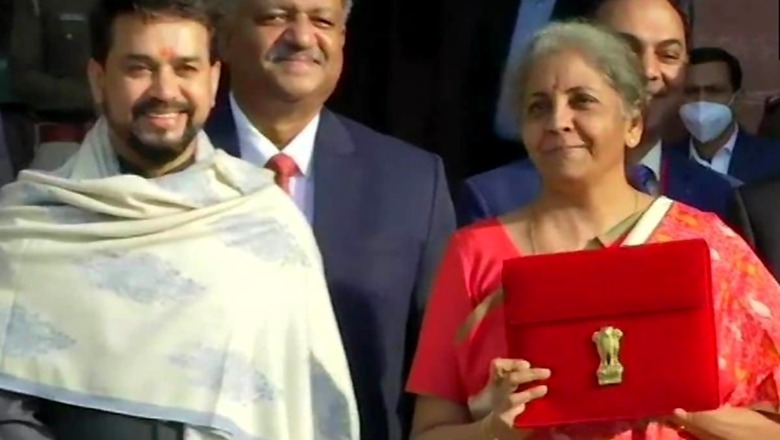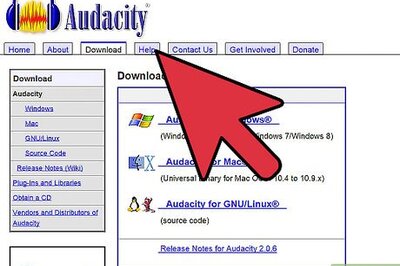
views
The Budget speech of the finance minister makes a declaration in para 82 that the government will “ensure faster resolution of cases”. Towards this end, the FM has announced that “NCLT framework will be strengthened, e-Courts system shall be implemented and alternate methods of debt resolution and special framework for MSMEs shall be introduced”. What does this mean and what are the implications for MSMEs? The trick to deciphering this proposal is to examine the context and view MSMEs as the driver for Atmanirbhar Bharat.
Context: A ravaging pandemic
The onset of the pandemic saw an increasing influx of insolvency petitions before the National Company Law Tribunal (NCLT) that necessitated restructuring and refinancing of businesses for revival, employment generation and avoidance of winding-up of businesses. As an immediate measure and as part of the Atmanirbhar Bharat package, MSMEs were divided into enterprises in the manufacturing or service industries and reclassified on the basis of turnover and investment, with access to collateral-free automatic loans to MSME under the Emergency Credit Line Guarantee Scheme. However, this was not found to be enough by the government, and rightly so. Hence, further steps are proposed in the Budget to obviate their pains.
Unravelling the NCLT and IBC-related proposal
With the Budget, the government has vowed to steer its policy drive towards strengthening NCLT processes for faster resolution of debts, including introduction of the long-awaited Special Resolution Framework, the contours of which remain shrouded in mystery until notified as law. Back in July 2018, the Sunil Mehta Committee Report had advocated a number of measures to streamline recovery and introduce innovative methods for recovery of NPAs which now have become all the more relevant. It proposed the “SME-Led Resolution” for debt recovery as a method alternative to the IBC route. This, if implemented would apply to cases with an exposure up to Rs 50 crore of loans, handled using a template approach devised by banks and supported by an SME steering committee. The proposal suggested that the resolution of these assets could be done by a single bank with liberty to customise it within a maximum period of 90 days. If one were to take a good guess, it can be expected that this means of recovery led by MSMEs, would, with perhaps a few modifications, form part of the special resolution framework for MSMEs that is in the pipeline.
Additionally, it is being expected that the pre-packaged insolvency resolution (where a company prepares the restructuring plan in cooperation with its creditors before initiating insolvency proceedings) could make a debut in the MSME segment before being expanded to other sectors. The pre-packaged resolution, if implemented, must contemplate a few carve-outs, for MSMEs that are otherwise viable units but are temporarily ailing due to the overall economic disruption especially felt across the nation’s supply chains. In this regard, the framework for pre-packaged resolution should envisage that the revival plan would be automatically approved without any interference, based on specific parametric thresholds for debt and default levels, concerned sector in which the unit operates, estimated haircut for creditors, etc. Needless to say, this would call for true and substantiated disclosures on all required parameters by the promoters of the debtor MSME.
What remains
While Budget announcements such as rationalising exemption on import of duty-free items as an incentive to export of MSME products is appreciated, the Budget is silent on addressing a few issues stemming from the Atmanirbhar Bharat package; for instance, the issue of increased default thresholds from Rs 1 lakh to Rs 1 crore which had curtailed the MSMEs’ ability to realise delayed payments. There are also no announcements on extension of the guarantee free loans. Perhaps the next steps of the finance minister hold the answers, including clarity on the Special Resolution Framework slated to come as amendments to the Insolvency Code.
An ideally formulated recovery framework and the provided stimulus will ensure adequate flow of credit within the sector, yet major bottlenecks which go to the very root remain. To illustrate, an expert committee on MSME sector led by UK Sinha in July 2019 report had, among other entirely novel initiatives, had recommended that the MSME Development Act, 2006, needs to be reimagined with focus on market facilitation and promoting ease of doing business. To this end, continued reformative measures towards sustainability and profitability is the need of the hour for MSMEs which undoubtedly form the bedrock of the Indian economy, employing the country’s teeming millions and are holding a lion’s share in India’s GDP as well as exports.
Conclusion
The Union Budget 2021 draws a roadmap for India, “the land of promise and hope”, to scale new peaks. It has recognised the imminent demands that the unprecedented economic situation has left in the wake of the pandemic and has vowed to cater to these through bold moves backed by massive fiscal spending. To this end, few measures specifically aimed at providing relief to badly hit Micro, Small and Medium Enterprises (MSME) have been announced in the Budget, amongst which the proposed alternate methods of debt resolution and special framework for MSMEs is a stand-out and are a welcome initiative of the government for this crucial segment of the economy.
The author is a Partner, BMR Legal. He was assisted by Madhura Bhat (Senior Associate). Views are personal.
Read all the Latest News, Breaking News and Coronavirus News here




















Comments
0 comment